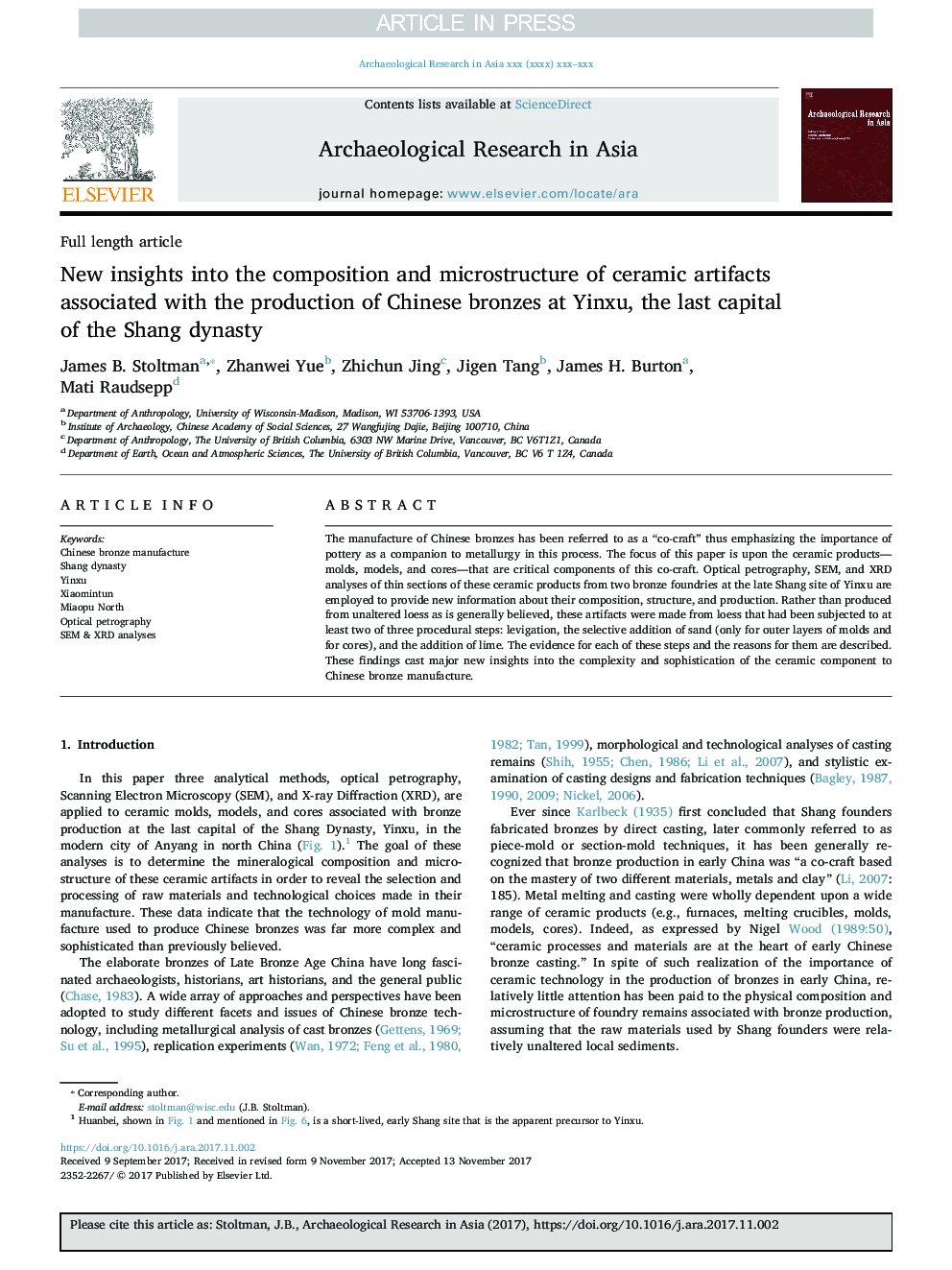| Article ID | Journal | Published Year | Pages | File Type |
|---|---|---|---|---|
| 8942500 | Archaeological Research in Asia | 2018 | 13 Pages |
Abstract
The manufacture of Chinese bronzes has been referred to as a “co-craft” thus emphasizing the importance of pottery as a companion to metallurgy in this process. The focus of this paper is upon the ceramic products- molds, models, and cores-that are critical components of this co-craft. Optical petrography, SEM, and XRD analyses of thin sections of these ceramic products from two bronze foundries at the late Shang site of Yinxu are employed to provide new information about their composition, structure, and production. Rather than produced from unaltered loess as is generally believed, these artifacts were made from loess that had been subjected to at least two of three procedural steps: levigation, the selective addition of sand (only for outer layers of molds and for cores), and the addition of lime. The evidence for each of these steps and the reasons for them are described. These findings cast major new insights into the complexity and sophistication of the ceramic component to Chinese bronze manufacture.
Related Topics
Social Sciences and Humanities
Arts and Humanities
History
Authors
James B. Stoltman, Zhanwei Yue, Zhichun Jing, Jigen Tang, James H. Burton, Mati Raudsepp,
